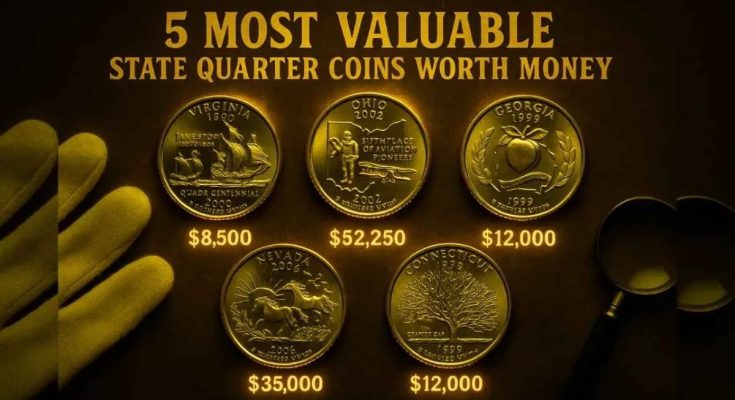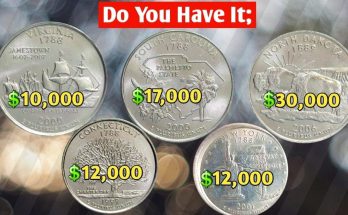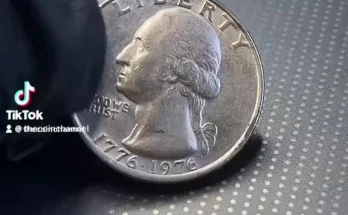5 Rare State Quarters That Could Be Worth $5,000 or More
“5 Rare State Quarters That Could Be Worth $5,000 or More,” is a perfect example of a modern-day treasure map. It shows a series of five State Quarters—Virginia, Ohio, Georgia, Nevada, and Connecticut—each with a staggering price tag, designed to make people second-guess spending their spare change. While the prices listed are almost certainly for coins in an extremely high, professionally graded condition, the image correctly points out that certain quarters from the Statehood series are, in fact, worth a significant premium.
The State Quarters Program, which ran from 1999 to 2008, produced billions of coins with 50 unique designs. This massive production and distribution created a unique opportunity for minting errors and varieties that have since become highly sought after by collectors. The coins highlighted in the image are a mix of those with known errors, high-value proofs, and coins that are simply rare in top condition.
Let’s explore the coins shown and why they are of interest to collectors:
1. The 2000 Virginia Quarter: The Virginia quarter, the first of the 2000 releases, honors the Jamestown settlement. While billions were minted, making a standard Virginia quarter worth only its face value, some have been found with specific errors. The image’s high valuation is likely based on the price of a coin with a significant, yet undocumented, error or a pristine, uncirculated “proof” coin, which is a special strike made for collectors. The standard circulating Virginia quarter, however, is not a known high-value rarity.
2. The 2002 Ohio Quarter: The Ohio quarter, featuring the state’s pioneering astronauts and an early airplane, is a very common coin in its regular form. However, some of these quarters have been found with unique errors, such as a die break that creates a small dot or line on the coin’s surface. A high value is typically associated with these obscure, yet valuable, errors or a coin that is in perfect, mint-state condition, graded at the very top of the scale (MS-67 or higher), which is a difficult feat to achieve for a circulating coin.
3. The 1999 Georgia Quarter: The Georgia quarter, featuring a peach on the reverse, is the fourth coin in the Statehood series. The value shown in the image is likely linked to a very specific and rare type of error. Some of the first quarters from this year were test strikes on “experimental planchets” that were intended for the new Sacagawea dollar coin. These coins have a distinct golden color and were not meant to be released into circulation. A confirmed example of one of these experimental planchet errors would indeed be worth a significant amount to a collector.
4. The 2006 Nevada Quarter: This quarter, featuring mustangs and mountains, is a standard issue. Like many other quarters in the series, it is not particularly rare in circulated condition. The value in the image is probably tied to an exceptionally high-graded coin, or a proof version struck on a silver planchet. The U.S. Mint produced special silver proof sets each year, and the coins within these sets, while not errors, are valuable because of their silver content and limited mintage.
5. The 1999 Connecticut Quarter: The Connecticut quarter is the final coin from the first year of the program. It features the famous Charter Oak tree. While the standard coin is common, the high value in the image can be attributed to several factors. For one, the first coins in any series tend to have more errors and are more desirable to collectors. The value shown could refer to a rare error, a high-graded coin with an excellent strike, or a silver proof version.
While the exact valuations in the image are almost certainly for the most exceptional and rare examples, the overall message is valid. The State Quarters program transformed how many people view their pocket change, turning a simple financial transaction into a potential treasure hunt. The “money shots” of these coins with large price tags remind us that rarity and perfection are what drive value in the world of numismatics, and that sometimes, a small coin can hold a big secret.



